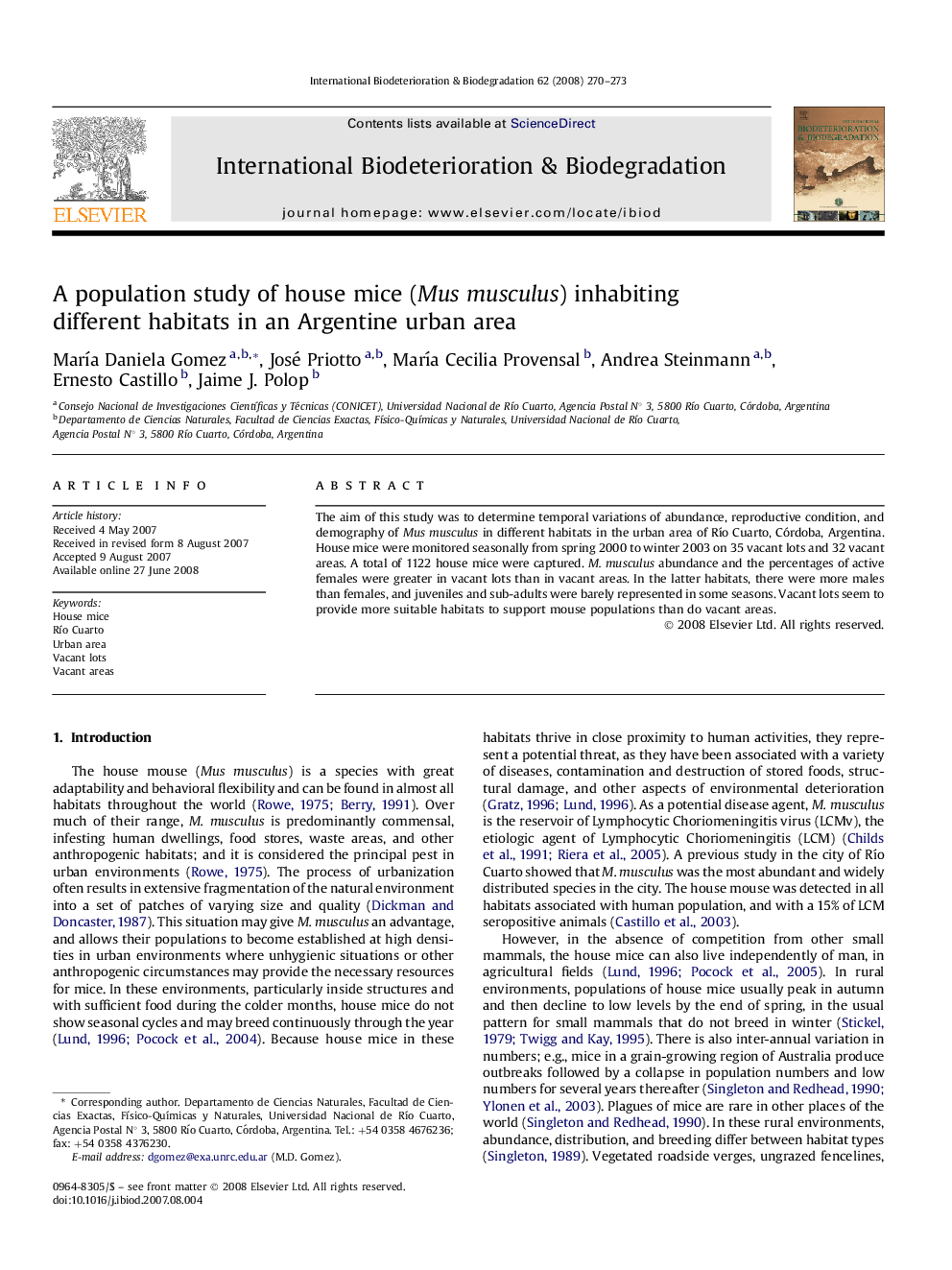| Article ID | Journal | Published Year | Pages | File Type |
|---|---|---|---|---|
| 4365690 | International Biodeterioration & Biodegradation | 2008 | 4 Pages |
Abstract
The aim of this study was to determine temporal variations of abundance, reproductive condition, and demography of Mus musculus in different habitats in the urban area of Río Cuarto, Córdoba, Argentina. House mice were monitored seasonally from spring 2000 to winter 2003 on 35 vacant lots and 32 vacant areas. A total of 1122 house mice were captured. M. musculus abundance and the percentages of active females were greater in vacant lots than in vacant areas. In the latter habitats, there were more males than females, and juveniles and sub-adults were barely represented in some seasons. Vacant lots seem to provide more suitable habitats to support mouse populations than do vacant areas.
Keywords
Related Topics
Life Sciences
Environmental Science
Environmental Science (General)
Authors
María Daniela Gomez, José Priotto, María Cecilia Provensal, Andrea Steinmann, Ernesto Castillo, Jaime J. Polop,
